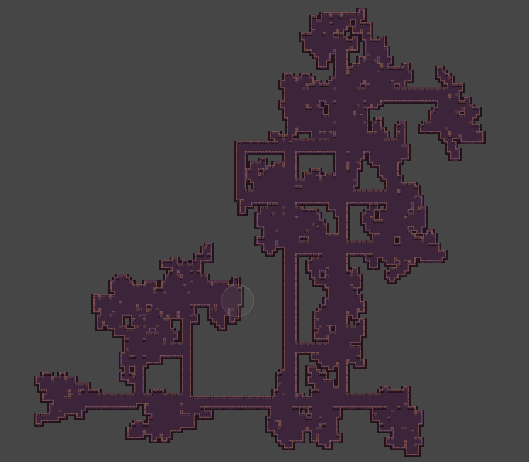For my graduation work bachelor thesis, I conducted an investigation into various methods of procedural content generation and how they could be implemented in a modern game engine. I have always had a special place in my heart for rogue-like games in which much of the game’s content and therefore player experience is procedurally created each playthrough.
This thesis allowed me to gain much more knowledge about procedural content generation as well as ways to tailor the player experience to a given design. The methods of procedural content generation I encountered in my studies include the TinyKeep algorithm which uses Delaunay Triangulation and graph theory, Cellular Automata, Wave Function Collapse, Binary Space Partitioning, and variations of the Random Walk algorithm.
I ended up choosing three prototypes to create using a Room-First, Corridor-First, and Wave Function Collapse approach implementing Binary Space Partitioning, variations of Random Walk, and Wave Function Collapse.
The thesis featured an extensive comparison of these different methods as well as my process for each implementation and the associated challenges and benefits of each.



Finally, I also researched into how to apply user feedback, place items procedurally in the generated layouts, and create a satisfying top-down shooter prototype that can be used to expand into a full rogue-like game. This adds visuals to the given research and shows how it can be applied to a real project. I intend to expand on the prototype from this research and create my own game, as such it has transformed into a personal passion project beyond just a bachelor thesis. All current visuals and content within the prototype are not final and subject to change, as most 2D sprites are free assets found online.
